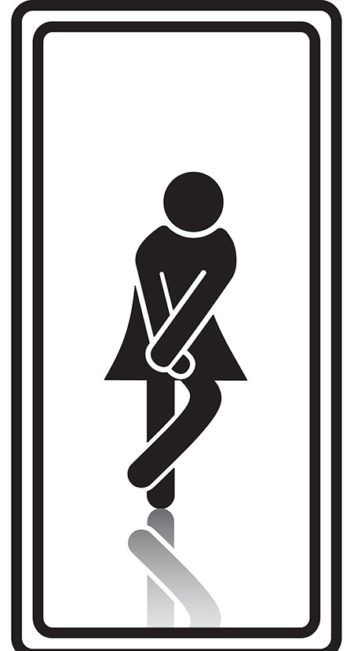Annemarie (48) suffers from urinary incontinence. Thanks to Moodies, she can go out again without stress.
It started with the occasional drop a few years ago, for example, when I got out of the car after work and couldn't open the door quickly enough. That was already quite annoying, but manageable. I always wore a panty liner back then, and always kept a few in my bag in case something went wrong. Especially because urine can have quite a strong odor, and I sometimes smelled myself. Those were the moments I felt ashamed of my incontinence.
Break the taboo on incontinence, you are certainly not alone
I started searching online and read that 1 in 5 women over 35 suffer from it, and 1 in 3 over 50. That helped me accept it better, but why don't we talk about it? We talk about all sorts of things with friends, but I never heard anyone mention this until I brought it up with a friend. It turned out she also suffers from it. It was good to be able to share my thoughts about this with someone. I think so many women struggle with this problem.

It's important to realize that even for general practitioners, this is simply a medical problem they regularly encounter. It's a problem that affects not only women but also men. GPs say they see patients find it difficult to talk about it. "They come in for a consultation, and while they're practically standing with their hands on the doorknob, incontinence is mentioned casually. But it's a serious problem, and we need to ask more questions to determine the cause and how we can best help the patient." Tip: approach it as a medical problem yourself; this can help you find the best solution for yourself and make it easier to talk about.
The pelvic floor is the problem
Running, sneezing, or a good laugh—many women can't keep these things dry. If you suffer from urinary incontinence, the muscles in your pelvic floor are probably too weak or too tense.
So how does that work? The pelvic floor consists of several layers of muscles at the bottom of the pelvis, which form a single whole. The pelvic floor is closely related to all the organs in the lower abdomen, such as the bladder, uterus, and intestines, as well as to the abdominal and back muscles, which in turn are related to your posture and movement.
If the pelvic floor never fully relaxes, it often struggles to contract when it really needs to. However, poor coordination of your transverse abdominal muscles or diaphragm—resulting from poor posture—can also cause urinary incontinence. The cause can vary, but it could also be due to the pelvic floor muscles weakening somewhat as we age.

Exercise helps with incontinence
For most types of urinary incontinence, there are exercises that can help you learn to relax and contract your pelvic floor better when needed. We recommend seeking help with this from a pelvic floor physiotherapist or visiting your general practitioner.
There are also women who need to urinate frequently and have difficulty holding it in. Accidents usually happen just before they reach the toilet. Bladder training helps with this. This is a training program in which, under the guidance of a pelvic floor physiotherapist—often through an app—you learn to gain more control over your bladder. Essentially, by postponing going to the toilet when you feel the urge. Ultimately, you learn to have more control over your bladder.
We're also hearing positive reports about the Femilift treatment. This is a laser treatment that improves blood flow to the vaginal wall, reducing urinary incontinence. It's not a cheap treatment and isn't covered by your insurance.
Urinary incontinence underwear is a really nice solution
And of course, it's nice to have peace of mind with elegant Moodies incontinence underwear . Incontinence underwear helps prevent embarrassing moments; it doesn't leak and absorbs odor. This prevents the embarrassment that comes with incontinence. And it's also very comfortable. So, say goodbye to panty liners; you can wear Moodies panties hygienically for up to 10 hours. And if you don't like them (after your first purchase), you can return them for a refund.
Looking for more information about incontinence and urine leakage? Visit the Thuisarts website for more information.







